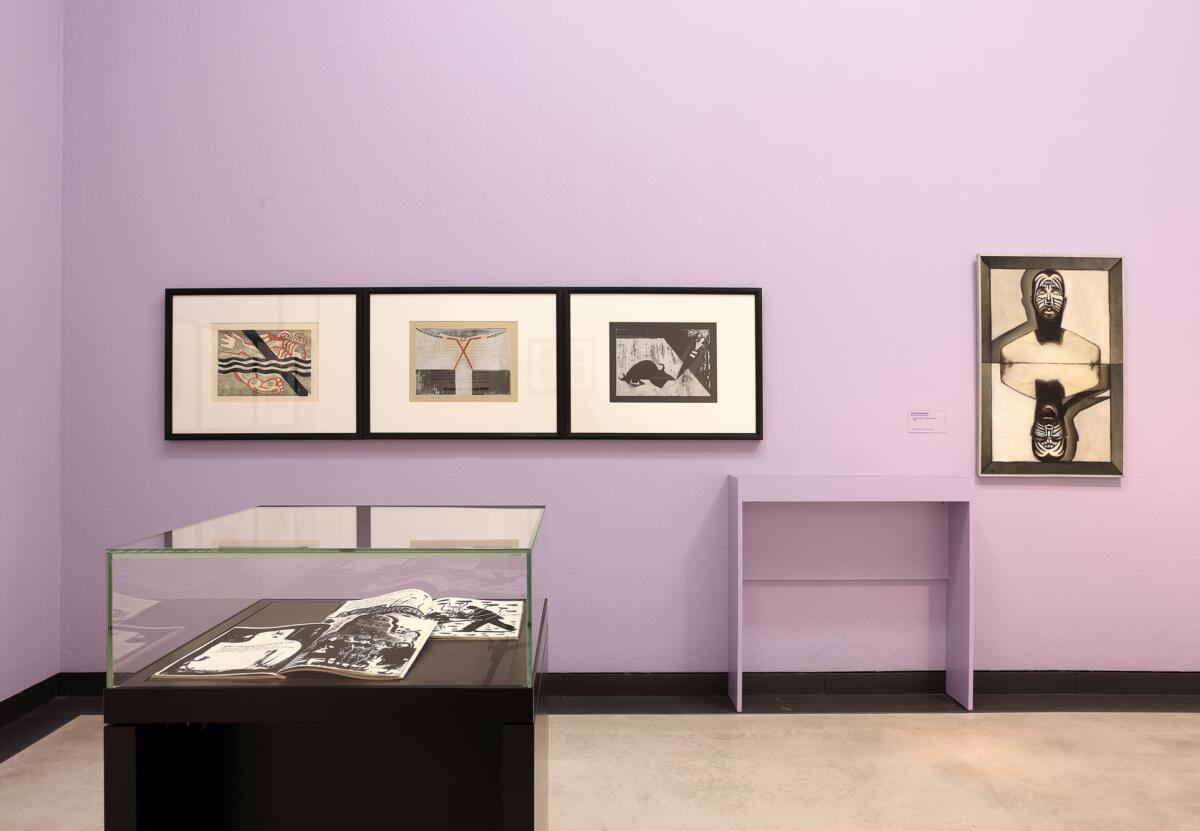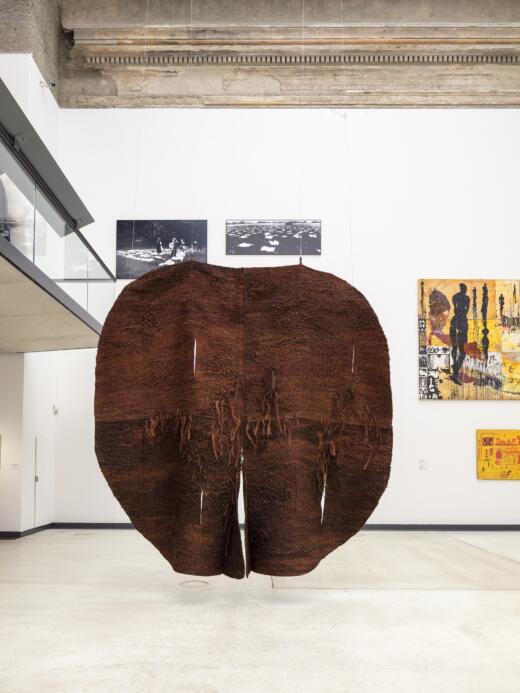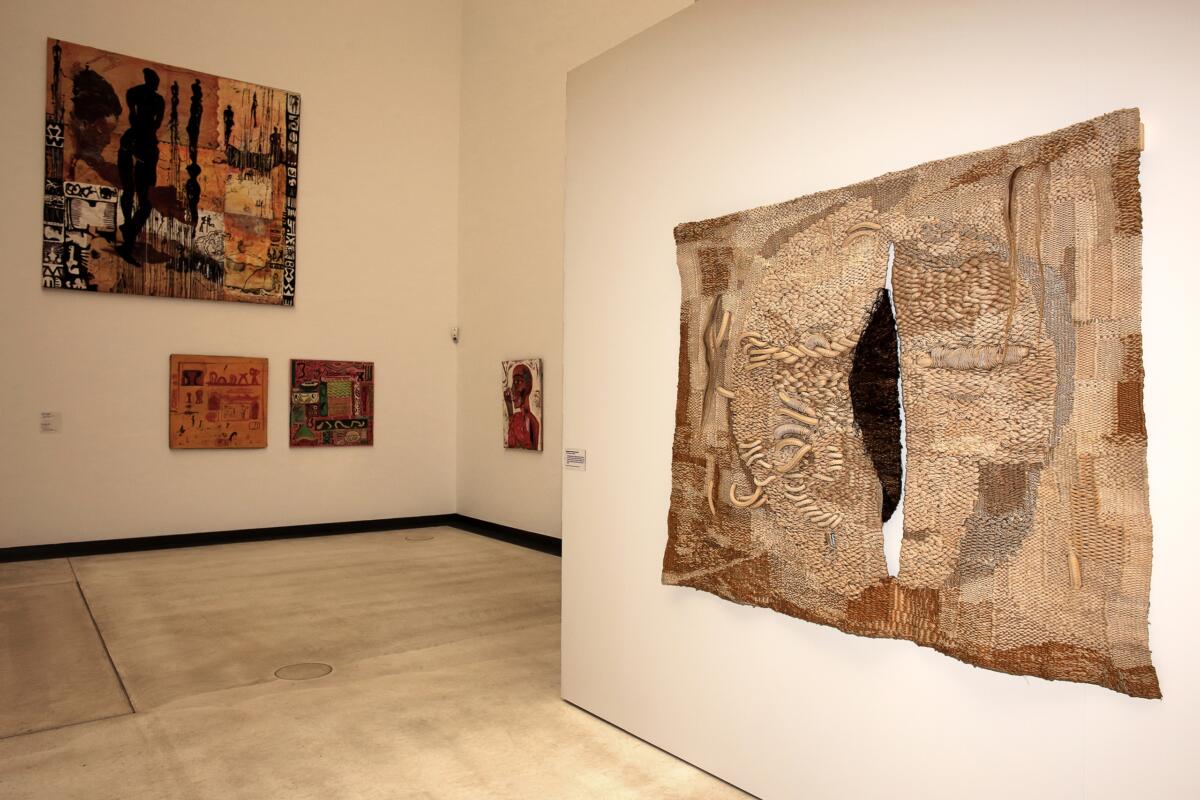
The text “Why the Insurrection, Medea?” authored by Susanne Altmann, has originally appeared in “The Medea Insurrection: Radical Women Artists Behind the Iron Curtain” published on the occasion of the exhibition by the same title, held at Kunsthalle im Lipsiusbau, Staatliche Kunstsammlungen Dresden (8 December 2018 – 31 March 2019), and at The Wende Museum, The Armory, Culver City, California (9 November 2019 – 5 April 2020). The team at BLOK would like to cordially thank the curator of the show and the author of the text, Ms Susanne Altmann, for permitting us to use her article and her generous help.
Prologue on the Train
Within her, a revolt. An insurrection. She, Gabriele, could also be called Penthesilea or Cassandra or, yes, Medea. That would have in no way been an unusual motif in the East German art of the year 1983. The adoption of classical figures to represent radicality and protest was at its height. Christa Wolf’s book Cassandra had just come out, the young painter Angela Hampel was beginning to explore antiheroines such as Penthesilea and Medea, Annemirl Bauer would soon por tray herself as a dark prophetess, and Lutz Dammbeck and Heiner Müller were following Heracles on his erring paths[1].This was mythology as an arena for social and political conflict – in literature, in theatre[2] as well as in painting[3]. Here, it is striking that the use of male and female models is divided along gender lines. While the failure of figures such as Icarus, Laocoön and Sisyphus remained a subject dealt with by male painters such as Hans Hendrik Grimmling, Wolfgang Mattheuer and Bernhard Heisig, women painters like Angela Hampel, Christine Schlegel and Karla Woisnitza availed themselves of mythological heroines for the representation of active, nonconformist femininity. Inspired not so much by the feminist theory that was being developed in the West as by an instinctive self empowerment within the prevailing authoritative and patriarchal system, these women artists identified with the dangerous insurrection staged by their figures. Gabriele Stötzer (previously Kachold), at that time, considered herself primarily as a writer. But she, as early as 1981, ignored with her artist friend Cornelia Schleime a state verdict and carried through with a rebellious body action in Hüpstedt, Thuringia, despite an official ban[4]. It was after this at the latest that she, camera in hand, embarked on a markedly female pictorial language.
In any case, on this day in early March, 1983, Gabriele is sitting on the train, travelling from Magdeburg back to Erfurt, and she is enraged. She has just heard the writer Heiner Müller, who, on invitation by his colleague Sascha Anderson, has read from his latest work at the clandestine Galerie Bahß[5]. Most likely, at the Schauspielhaus Bochum, West Germany, they were just running the rehearsals of his textual triptych Waterfront Wasteland Medea Material Landscape with Argonauts (Verkommenes Ufer Medea material Landschaft mit Argonauten)[6], which was going to premiere there on 22 April. From the Magdeburg perspective, this might as well have been on a different continent. In the West, the unruly “East Zone” author and member of an elite permitted to travel to Western countries would later be celebrated for his apocalyptic images, with which he hurled the ancient material into the present moment[7]. The audience perhaps felt pleasurable shivers watching this endtime scenario full of violence, betrayal, murder and the like, possibly understanding it as social criticism of a faraway dictatorship. In Magdeburg, the play has been received a little differently: Gabriele is not able to protect herself with intellectual and geopolitical distance; she takes the text personally and the central Medea Material in particular has her in a turmoil. Müller, a dramatist through and through, purports to be at home in his characters. Dressed as Medea and thus as a “knower of the poisons” he has thrown a monologue that is utterly dripping with blood in the face of a shocked Jason:
“…I want to cut you from my heart // The flesh of my heart, my memory, my dear ones// Give me my blood back from your veins // Back to my body, entrails to you // Today is payday // Today Jason // Medea collects what is due to her // Can you laugh now Death is a gift // From my hands you shall receive it // I have behind me broken off completely // What home // meant is now behind us my foreign lands // So that it will not become home to you a thing of scorn for me // With these my // Human hands oh // If only I had remained the animal I was // Before a man // Made me his wife // Medea the barbarian now spurned // With these my hands of the barbarian herself // Hands scoured, pierced, chafed over and over // I want to break mankind in two // And live in the empty middle …”[8]
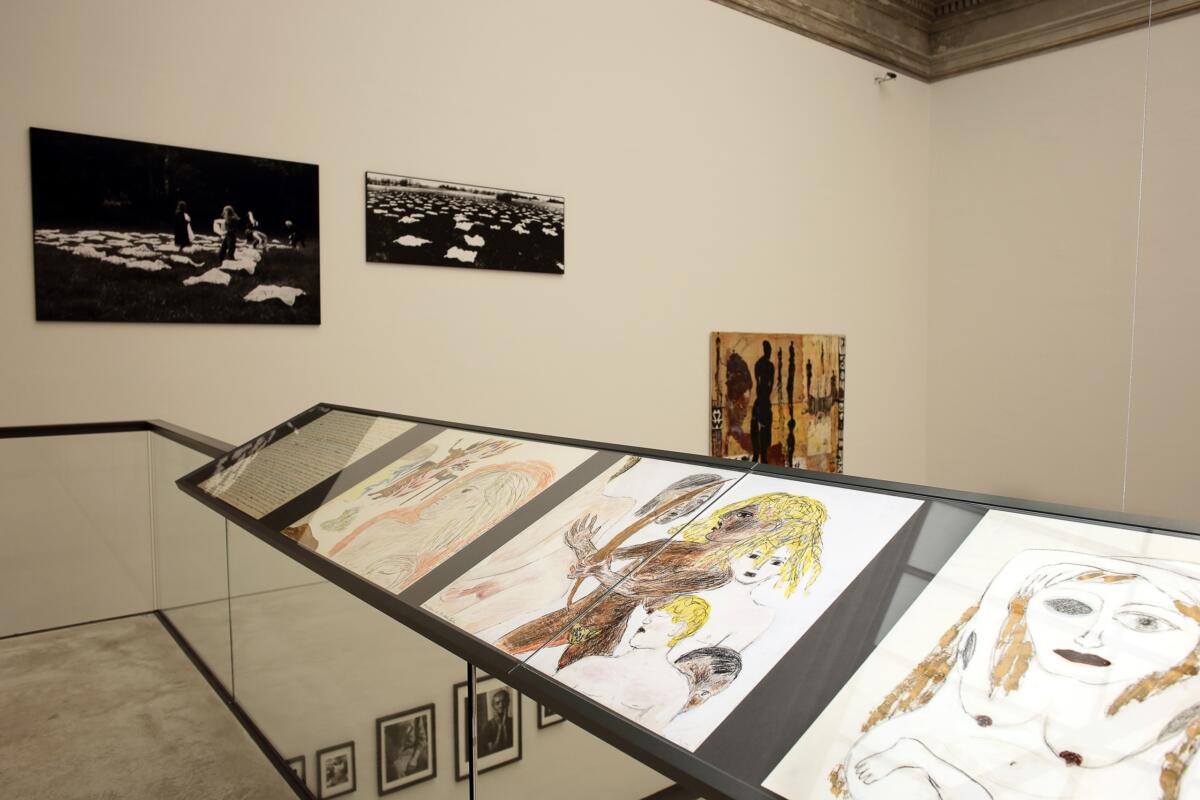

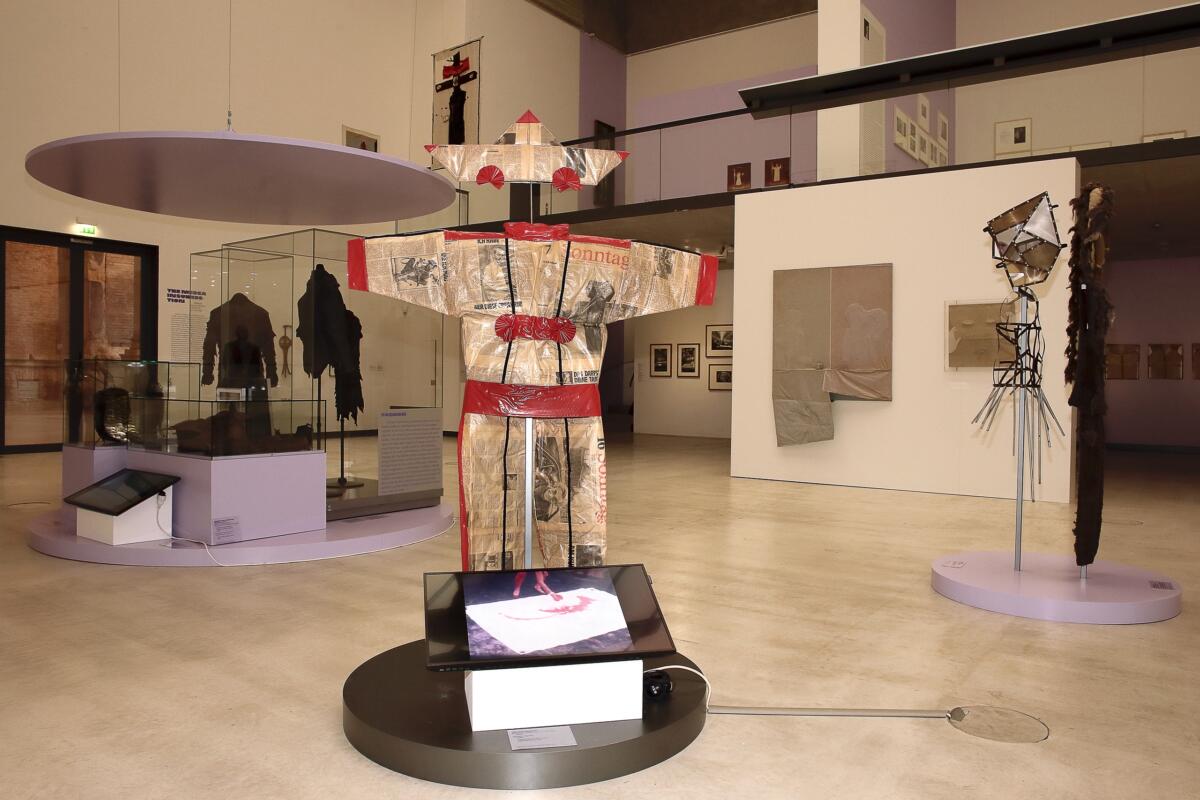
Behind Müller’s reading of Medea as a selfdeclared animal, as a barbarian, as a natural catastrophe, as the Platonic form of a fury, there is nothing left of a human being, and even Euripides had granted her that. Müller’s projection makes it clear that unleashed femininity is crueller than men’s methodical, structural violence ever could be. And it is against this that Gabriele in her train compartment revolts, with no lack of decisiveness, wanting to know how such assignments of meaning are arrived at. She writes:
“… medea is too close to male power manpower // man creates a woman in his own image – and then he leaves her the man only ever creates a man then he is disappointed with the counterimage that he only recognizes as a non-man as an imperfect dickless hybrid-male he does not have and just not that // medea is a nonperson medea is a character of a tragedy invented by men to continue the tragedy and this is not outright against women yet one has nothing got to spare for the woman”[9].
Gabriele Stötzer, nearing thirty in this spring of 1983, has learned her lesson and, like the others, she has not learned it from the feminist writings of the 1970s and also not (yet) from Christa Wolf’s Cassandra, but rather in prison, where she – the “political one” from the Biermann Affair – spent a year in 1976 with women of all ages, educational levels, sexual orientations and degrees of social energy. After this she was no longer in need of any kind of theory to enable her to grasp the “depth, passion and resilience”[10] of female power and self-determination. From then on at the latest her focus would again and again be on the definition and yes, the celebration of these qualities, both in revolting against “Father State” (aka: the GDR)[11] as well as against the machismo that even in East German counter-culture was part of the order of the day[12]. Her works, the literary ones especially, will relate from now on to womanhood in all its possible shades of nonconformity and radicality.
Why Look to the East?
The past thirty years in the history of post-transformation art reception have clearly shown how great the temptation is to read works that were created in certain political conditions purely as symptoms of the contemporary history, especially works of the “second public sphere”[13]. This is true especially of German research about Germany and the view of the Eastern Bloc as seen from the West. With the best intentions, numerous academics have tried to consider the quality of art through the lens of its dissident potential. Others have put the focus on making comparisons with Western tendencies, and then had difficulties to explain the respective originality. Both are heuristic culdesacs because with both the first and the second approach, arthistorical uniqueness in terms of mediality and aesthetics cannot be fully accounted for. Without a doubt, the artists of the Eastern Bloc did not operate in a global vacuum. Yet at the same time, The Medea Insurrection. Radical Women Artists Behind the Iron Curtain wishes to call for a synoptic, and for the time being exclusive presentation of the East, one that has been a long time coming[14]. Here the pioneering work of the distinguished Polish art historian Piotr Piotrowski (1952–2015) forms an excellent fundament because he was one of the few experts who unquestioningly integrated[15] progressive art that was created in East Germany, thus pointing the way and delivering it from the often deprecating and frustrating comparison with specifically West German art. production[16]. Piotrowski’s achievements when it comes to a productive East-East-contextualization became undisputed at the latest with his work In the Shadow of Yalta. Art and the Avantgarde in Eastern Europe 1945–1989[17]. As early as 2001, before the publication of the book, Piotrowski wrote in his criticism of the exhibition Europa, Europa. The Century of the Avant–Garde in Central and Eastern Europe (Europa, Europa. Das Jahrhundert der Avantgarde in Mittel und Osteuropa)[18]: “Excluded was also the art of the German Democratic Republic, a fragment of the German territory incorporated after 1945 into the political sphere of the East […] The case of the German Democratic Republic may perhaps be unique […] Still, we must not surrender to illusions. In terms of the cultural policy tactics and the practice of surveillance, there were some differences among particular countries of the region, however, in terms of the power system and structures the differences were minor”[19]. For establishing a foundation of his idea of an art geography, Piotrowski too makes use of the geopolitical (and hence contemporary historical) framework. This is, of course, hardly imaginable any other way. At the same time he calls on every researcher to turn their first attention very well to the political specifics of the communist subterritories, then, however, to engage with no furtherado with the respective artistic factors and even more with the autonomy of the individual art works so as to then, in a third step, address the question of the “universalist ambitions of the local cultures at tempting to find compensation for the traumatic reality experience.[20]” While this may sound complicated at first, it does provide a viable road map for what has to happen before a global perspective on distinct art worlds can be approached. In 2019, The Medea Insurrection is jumping aboard this moving train which has already passed the first stop, that of the political aspects, or rather we are taking them along in the luggage van, available for further consideration. In the second of the three steps recommended by Piotrowski, we now face all sorts of barriers, the greatest of which is likely the invisibility of large parts of Eastern European artistic creation, both in intellection and in physical respects. And this brings us straight to the issue of women in art.
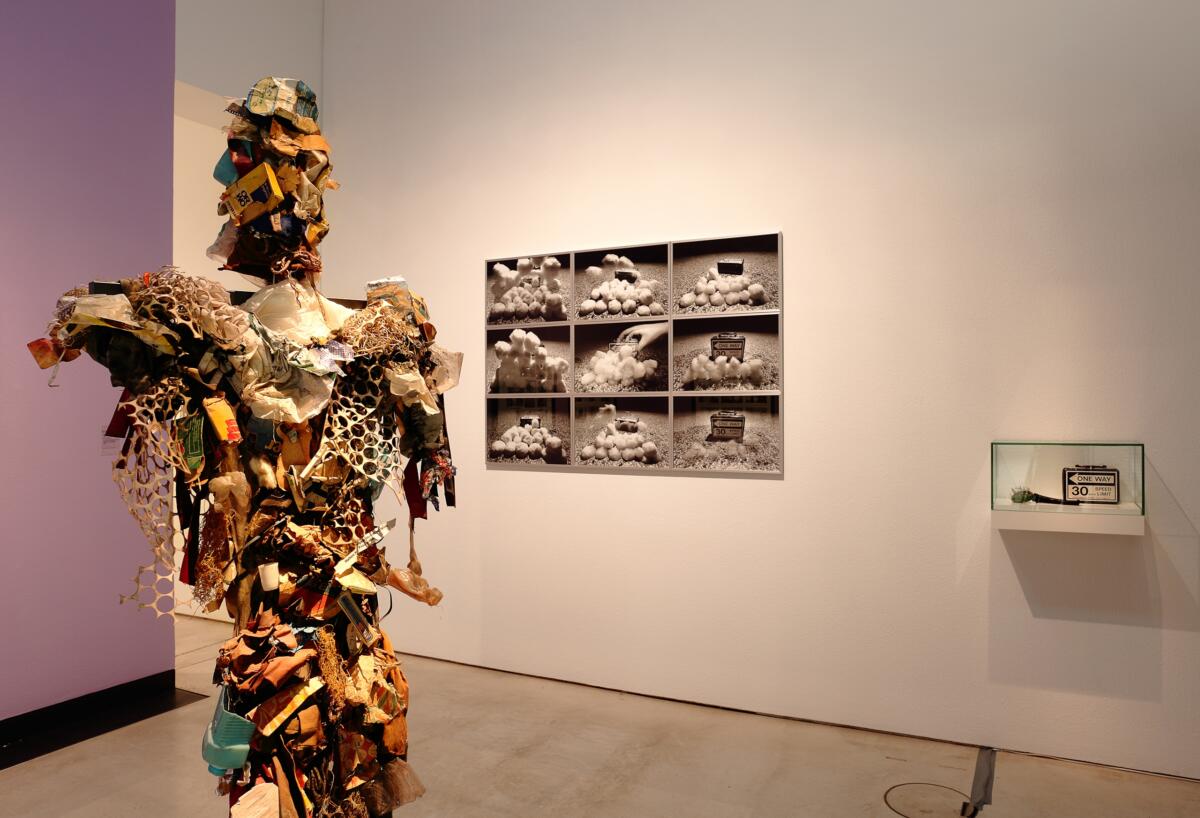

Women in Art
Because after all, when we look for the contributions of women artists from a particular era, things seem even bleaker in what is a periphery already. Coming on top of the “normal” invisibility that one finds in politically repressive contexts is the traditional, far-reaching absence of women within art history at large[21]. The twentyfirst century began with the responsibility – which has still not been fully acknowledged – to eradicate the discriminating nature of art history per se against women, its structural negation of women artists. One route to take might be the complete rejection of methods and concepts of traditional art history, as suggested in the 1980s by Linda Nochlin, Roszika Parker and Griselda Pollock[22]. Parker and Pollock even demanded that, when evaluating and categorizing art created by women, one must stop shining a light solely on “their continual struggle against exclusion and discrimination”[23] or on “exaggerated biographical interest.” This, in their view, would distort the necessary analysis of the work. This very reasonable demand may be applied today in a slightly modified fashion to the treatment of women artists behind the Iron Curtain. Because it serves neither their artistic creation nor a reputable, if partly outdated, art historiography to weave a narrative exclusively along personal, geopolitical or genderspecific lines. Doing away with marginalization cannot mean creating new peripheral biotopes. Not even when the intention is good, as with Piotrowski. Tragically, in the last chapter of his book he subsumes the majority of the women artists he accepts under the heading Politics of Identity. Male and Female Body Art. There, artists such as Alina Szapocznikow, Natalia LL, Geta Brătescu, Sanja Iveković, Marina Abramović and Else Gabriel find themselves in a strange forced community, thus suggesting that women artists in their practice essentially engaged with the body. In his other chapters, Piotrowski treats all manner of postwar tendencies such as Informel, geomet ric art, realist painting, neo-avantgarde and conceptual art. Here he introduces Harald Metzkes, a.r. penck, Hermann Glöckner and Carlfriedrich Claus. It seems there were no notable East German women who made this art in his view: Cornelia Schleime? Angela Hampel? Ruth WolfRehfeldt? Tina Bara? Doris Ziegler? This deficit cannot be explained in terms of an insufficient state of research alone; after all, In the Shadow of Yalta was published fifteen years after the fall of the wall. Rather, it illustrates a systemic blind spot. Because why would the author leave out his compatriots Magdalena Abakanowicz and Ewa Partum, mention Dóra Maurer or Zofia Kulik only in footnotes, withhold Běla Kolařová and Adriena Šimotová? Although it can be shown that each of these artistic positions is highly autonomous and contemporary. That Abakanowicz released textile art from the domain of rugmaking and handcraft, rendering it an expressive form in its own right, that Maurer and Kolařová freed the minimalist grid of the postwar avant-garde from its rationality, that Šimotová transformed paper into a medium of bodily expression, that Kulik interpreted serial photography as subtle gender criticism or that East German female painters like Ziegler and Hampel expanded the unique characteristic of East German critical figuration and did so not only with respect to motif and style but also, like Schleime and Schlegel, in terms of media – all of that is part of a (not yet written) post-1945 Eastern European art history. It will only be after a responsible survey along these lines is carried out that we will be able to read a global narrative – even after the “end of art history” (Hans Belting) – in which all previously marginalized areas appear on equal terms, including of course the post-colonial territories of Africa, Latin America, Asia and the Soviet Union.
Art History – Contemporary History
Bringing together the art of a certain time and place – here the so-called Eastern Bloc between 1961 and 1989 – The Medea Insurrection aims to show that artistic responses and experiments in media took place as they only could have there and then. We owe it to these positions to give them a thoroughgoing stylistic analysis in precisely this context, before simply going ahead and comparing them in the Western paradigm and pigeonholing them. Often the stylistic means adopted by the women artists presented here stood in a dangerous contradiction to what was being taught at the art academies; not necessarily because the doctrine of real socialism was being demanded vociferously in each of the respective countries, but rather because there was a pervasive, conservative stagnation in terms of techniques and subjects, coming from latebourgeois academicisms. For this reason, truly creative confrontations – depending on the degree of state repression – mainly occurred in the networks of the second public sphere, first measurable and visible to today’s viewers in the early 1960s. For much too long, these informal or semi-official scenes were considered downright exotic symptoms of Cold War history. Here, women artists in particular are still underrepresented, despite the revisions that have taken place in the past ten years. This phenomenon seems like the delayed effect of the exclusion that took place before 1989, where even in the counterculture women had to suffer a lack of acceptance from male fellow artists or else gain visibility only through the greatest efforts[24].
Thus, when looking at other countries under scrutiny here too, the question arises, why names like Jíři Kolář, Jíři John, Ion Grigorescu, Miklós Erdély, Endre Tót, Jan Ságl were more well known on the international stage until just recently (or even still are today) than the names of their female partners in life and/or in art: Běla Kolářová, Adriena Šimotová, Geta Brătescu, Zsusza Szenes, Ewa Partum and Zorka Ságlová[25]? Question marks also surround the fact that dancer, choreographer and dance educator Hanne Wandtke’s contributions to the performances of the Dresden Autoperforationsartisten as well as her own performance activities beginning in 1987 have never been appreciated by academics and curators. Pointing fingers has no place here, but it is nevertheless indispensable in the context of a stylistic criticism of the work of that group to at least note the stage and body experience Wandtke contributed in her close collaboration[26].
Else Gabriel once referred to such mechanisms in relation to her own work with the Autoperforationsartisten group in Dresden as a double-exclusion, which reflected the double burden of working women in a supposedly equitable system. She spoke of a “double camouflage” – that of a non-conformist woman artist and that of a woman in a men’s environment[27]. This held even if, in looking back, Gabriel found that it would have been simply embarrassing to programmatically make womanhood a subject of the performances. Nevertheless, she herself often incorporated such role models, grotesquely exaggerated, in her repertoire: “She gave ironic presentations of the activities of the homemaker by drying a dead chicken with a hairdryer in Top of the Meat Mountain (Spitze des Fleischbergs, 1986) and, elsewhere, by excessively kneading dough. While for Ode Terrazzo (1987), she let herself be carried to the place of performance on flan cases and stuffed raw beef lung into the décolleté of her sequin gown, at other occasions she liked to make full performative use of her long hair, as a classical feminine attribute.[28]”
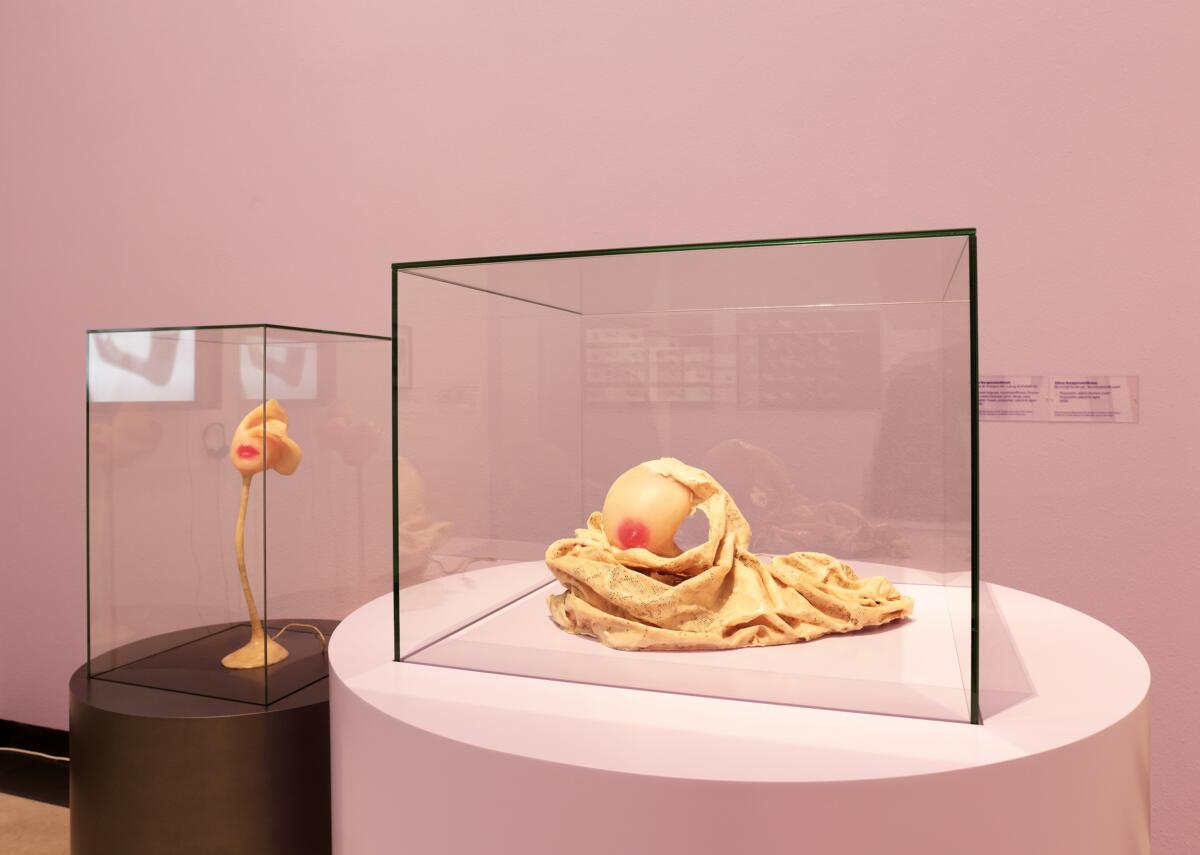



It would of course be presumptuous to attribute a feminist mood to each and every artistic paraphrase of gender roles as they appeared, with some temporal variance, across Eastern Europe. After all, was not the radical act of taking possession of one’s own physicality a critical meta commentary on the comprehensive regimentation of the personal? While this was often politically intended, it does not mean that it could be subsumed in trends of Western discourse[29]. Such a reading was decidedly rejected by some women artists, especially in the 1990s. On the one hand, this was because they feared a new marginalization and on the other because they did not yet comprehend all facets of the intuitive uneasiness they had felt before 1989. Accordingly, alongside Gabriel, a basic feminist disposition was also rejected by Gundula Schulze Eldowy, Zofia Kulik, Dóra Maurer and Cornelia Schleime[30]. This is every bit their right, and yet, it must not prevent today’s viewers from designating these women artists’ poetic, analytical and emblematic approaches to womanhood precisely along these lines.
Undisputably, a specific language unique to women artists arose from the artistic interpretation of female self-ascribed and non-self-ascribed body images, a language that due to the evoked vulnerability and exhibitionist courage constitutes something singular in this period – something that also stands apart from the majority of male artistic production. While in Hungary and Poland, the spoken word and sound artist Katalin Ladik as well as radical performers such as Ewa Partum, Natalia LL, Orshi Drozdik and Judit Kele deliberately took up the subject of gender roles as early as the 1970s[31], this tendency arose later in East Germany with Gabriele Stötzer’s activities and with those of the Erfurt group of women artists, with the collaboration of Christine Schlegel and the dance performer Fine Kwiatkowski – later, but not less strikingly. Often these time lags have to do with the culturalpolitical spectrum ranging from more liberal to more restricting and varying from decade to decade. The liberalization in Poland during the 1970s, for example, led to a blossoming of conceptual work, as was the case in the “short” decade of the 1960s in Czechoslovakia, although here, the suppression of the Prague Spring also led to increased critical artistic responses to the socalled normalization phase beginning in 1968[32]. It was in the nature of things that the latter tended to unfold in (semi) private spaces, as with artists such as Magdalena Jetelová and Zorka Ságlová. In Romania, the early years of Nicolae Ceaușescu’s rule up to the mid 1970s were marked by a certain tolerance in which art forms that in other places were defamed as formalistic were able to flourish for a while. Unlike in Romania, the communist leadership of the People’s Republic of Hungary participated actively in putting down the Prague Spring, something that shakes the stereotype of Hungary as the “most cheerful” and thereby most liberal “barracks” of the socialist camp, as was said colloquially. To begin with, Hungary shared with Czechoslovakia and East Germany – as Éva Forgács notes – the “ice age” of the 1950s[33], whose hardship (unlike in Poland) continued largely unchanged after Stalin’s death in 1953.
An independent Hungarian performance scene increasingly developed in rural areas in the 1970s, away from the supervision of the capital city, while an autonomous textile art scene developed in the protected realm of folk art and the applied arts, which received little attention – both phenomena that bespeak restrictive conditions like in Czechoslovakia[34]. At no time in East Germany, on the other hand, can a true liberalization be said to have taken place, simply because, for one thing, it was possible that unwelcome intellectuals would be expatriated to West Germany, like Wolf Biermann in 1976, and it was clear that everyone else would be treated as restrictively as always. Accordingly, the 1980s in East Germany were marked by the phenomenon of mass departure and by, if one wants, an increasingly defiant atti tude on the part of the remaining creatives who had nothing to lose either way. Another specifically East German phenomenon is the Stasi’s mass surveillance and Zer setzung of artist circles. Unlike in the socialist “brother nations”, this led to spectacular revelations after 1989 and continues to be addressed today. Women artists in particular responded to the issue in their works, for example Cornelia Schleime, Verena Kyselka (Erfurt Women Artists’ Group), Gabriele Stötzer and Christine Schlegel.
Naturally, the symptoms of the hardship resemble each other, as do the artistic responses to them – they do not permit an ad hoc comparison with those of the West, especially not with the aid of a levelling concept of artistic freedom as a yardstick for arthistorical relevance: often the radicality of personal and collective transgressions in art is defined by the risks involved. Along these lines, the Czech writer, dissident and later president Václav Havel asserted that when it came to the reception of unofficial pictorial art in the normalization phase, that the ruling powers were not interested in persecuting “that which was declared as a threat towards them, but has no special artistic strength, but rather that which may not look particularly political, but goes very deep artistically.”[35] And Natalia LL answered the question about possible ressentment concerning the absence of Polish artists in global art history as follows: “Every period of time has its good and bad aspects. A lot of brilliant art was made during that period [before 1989, author’s note]. If the borders had been opened we could probably have had done more. But it was not a wasted chance. In difficult times you have to be more efficient in order to defeat all the obstacles; so you become stronger.”[36]
The Exhibition as Systemic Criticism and a Cognitive Act
Another way to arrive at aesthetically and historically interwoven reflections such as these is of course via the timeconsuming study of artworks, sources, collections and testimonials. But ultimately in image studies the focus is on the visual works and their physical presence. This too, in a completely old-fashioned sense, has to be a prerequisite for analyses of style and material. In the course of the preparations for The Medea Insurrection and its first manifestation in a museum context, the exhibition gave rise to an epistemological space on its own. This was because during the curatorial devel opment of the show, which specifically created connections between different visual aspects and media, areas of focus emerged which had not always been planned and conceptualized beforehand. To conclude, some of these areas will be presented here briefly. In identifying them, arthistorical terminology is deliberately fuzzy. And not only that: by introducing nonestablished fields of inquiry such as Small Format, Fashion, Textiles, and Open Space next to traditional ones such as Painting, Art Photography, Body Work, (leaving out, for example, Sculpture, Prints, Performance and Land Art) conceptual arrangements are suggested – and allowed to enter the discussion – that only respond to the traditional canon of genres to a limited degree. Perhaps the question is not where does one find that which is specifically Eastern European or else female in the works of these artists but rather the other way around: How can concepts that appear apodictic be adapted to a changed situation? Because how else can we suss out the artistic transgressions if they evade existing definitions or are stymied in their effect by an existing definition? Does not the discipline of art history have an obligation to pay its debt to art and not the other way around?[37]
In this vein, categories such as “neoavantgarde” “trans avantgarde” and “neoconceptualism” tend to be, from an orthodox perspective, disqualifying criteria for vast areas of art production in Eastern Europe prior to 1989. That, or they contribute to certain women artists’ oeuvres becoming distorted because they are interpreted very selectively, causing their development to become invisible. As Emese Kürti establishes in her article on Katalin Ladik, “As with other Eastern European women artists, the absolutely personal aesthetics of Ladik’s body and sound poetry become graspable not so much in their affinity to mainstream discourse but in their deviation from it.”[38] In the East, the Western theories referred to here as “mainstream discourse”, were hardly, or perhaps not at all, invested with the kind of authority that for example the clique of US critics includ ing Michael Fried, Rosalind Krauss and Benjamin H. D. Buchloh held over artists in their ambit. In retrospect, it almost seems plausible to regard this state of not being observed by the Western interpretive powers in those days as a form of artistic freedom. “Deviations”, however, point once again to an apodictic benchmark. This objection cannot be dispensed with here, but it points to a further conceptual minefield that likely cannot be avoided by any current paper or exhibition on the subject (Medea included): bohemianism, subculture, underground. The empirical intersections of these rubrics with one another and with the art production that is the subject of the present investigation are certainly a given. And there is no reason why social and cultural studies should not be carried out for the respective scenes in the socialist people’s republics of Eastern Europe. For the East German situation, Paul Kaiser produced an exhibition catalogue titled Boheme und Diktatur in der DDR. Gruppen Konflikte Quartiere 1970–1989[39] in 1997, and followed it up in 2016 with the even more com prehensive Boheme in der DDR. Kunst und Gegenkultur im Staatssozialimus[40]. Especially the latter publication is a historical reference that abounds with sources. In addition, it maps out – without meaning to – the dilemma of East German art classification, whether close to the political system or distant: there are no academic and/or curatorial compendia that analyse the time, either as a whole or in part, between 1960 and 1989 for East Germany, while they have existed since 1990 for Hungary (Hans Knoll, Emese Kürti), Poland (Anda Rottenberg, Agata Jakubowska, Łukasz Ronduda), Romania (Magda Radu, Mihai Pop, Adrian Bojenoiu) and Czechoslovakia (Jana and Jíři Ševčikovi, Tomáš Pospiszyl). Were such works not written only because there was no (in the best sense) national justification for them? Or to put it the other way around, because there was no West Poland, West Hungary, etc? There would only have been a methodological challenge insofar as tense demar cation disputes, which aimed at drawing the line between the accepted statesupporting art in East Germany and the nonconformist art, appeared to stand in the way of such a task. In addition, the collective East German ambivalence between claims to identity and the desire to belong after German reunification may have had a dampening effect. In this climate of insecurity categories like bohemianism, subculture and counterculture appear to have offered the only acceptable means of assessing East German art, perhaps even of an alleged necessary legitimation thereof. This categorization continues to have an effect today and in part accounts for the sense of being slighted that some artists have; they feel forgotten, overlooked or assigned to the wrong category. In retrospect, not only East German artists regret the needless urge to explain and rectify their previous achievements to the West after 1989. Now, more than twenty years on, it is difficult to determine if an early calibration with the situation in the East would have been an effective medication for these symptoms.
It is a fact, however, that in the Eastern countries that neighbour the “new” states of the Federal Republic of Germany, artists who were active prior to 1989 developed a different feeling of self-esteem. The research mentioned above only partly explains this; what is also at work is the fact that the younger generation there gained firm orientation from their older role models and derived creative genealogies from them. For Poland, one could cite the references made to such artists as Tadeusz Kantor, Oskar Hansen and Edward Krasiński and name the example of Zbigniew Libera’s project Mistrzowie (Masters, 2004)[41]. In former Czechoslovakia, it was artists such as Boris Ondreička and Barbora Klimová who made positions like those of Stano Filko and Jíři Kovanda widely known again. For Romania, the collaboration of Stefan Sava and Geta Brătescu as well as Anetta Mona Chişa & Lucia Tkáčová’s collaboration with Ion Grigorescu were incisive. And this is naming only a few examples of inter-generational referencing[42]. Apart from a few, late exceptions such as Olaf Holzapfel / Karlheinz Adler, Tilo Schulz / Wilhelm Müller and Olaf Nicolai / Hermann Glöckner, comparable practical systems of reference do not exist in the domain of East German art.
And now, provisionally in any case, comes one final empirical insight that came out of The Medea Insurrection. The gathered works by Hungarian, Romanian, Czech, Slovakian and Polish women are almost without exception on loan from the large national art museums of their countries. But works from East Germany, for example by Christa Jeitner and Gabriele Stötzer, from the Erfurt Women Artists’ Group, by Tina Bara, Annemirl Bauer and Erika Stürmer Alex, as well as the majority of the objects by Christine Schlegel and Cornelia Schleime were borrowed from the artists’ private collections or from their estates[43]. This fact hardly requires any comment; the instructions are clear. It is 2019, and we still have quite a few things to learn from the East.
Edited by Ewa Borysiewicz and Katie Zazenski

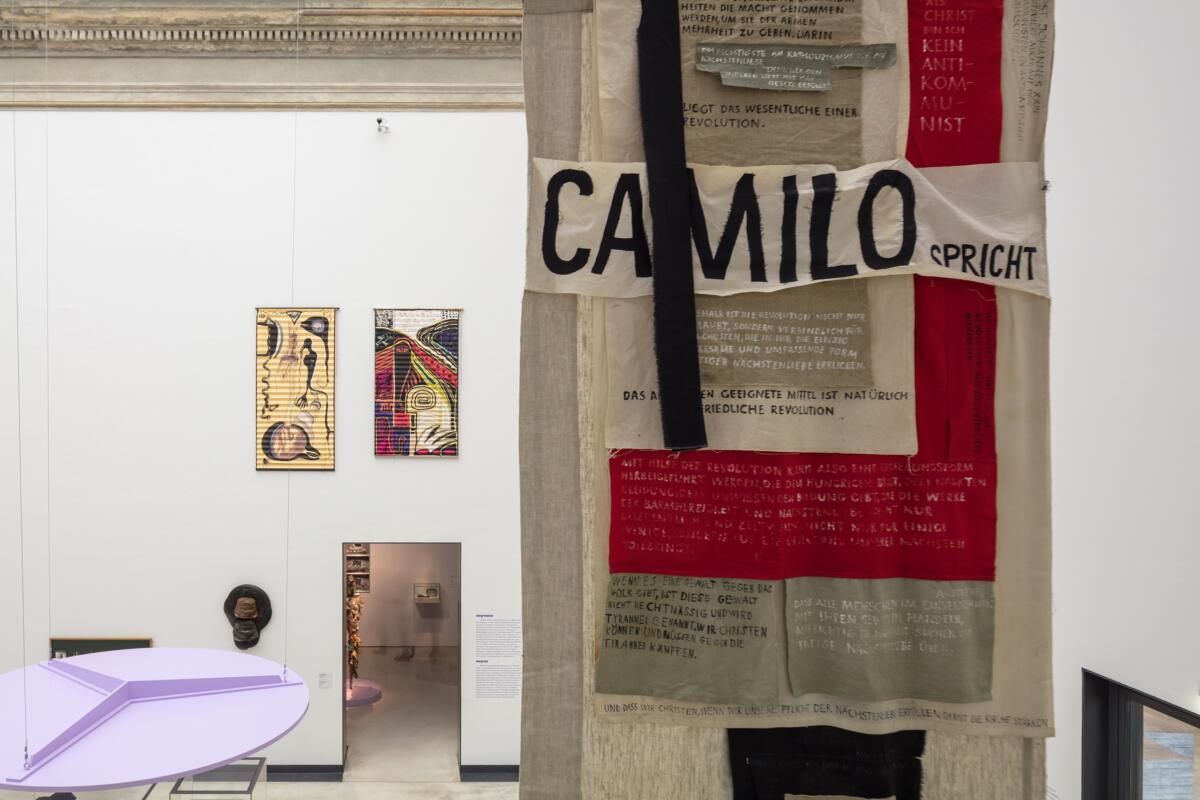
[1] The following might be considered the predecessors of this tendency: Franz Fühmann, Das hölzerne Pferd: Die Sage vom Untergang Trojas und von den Irrfahrten des Odysseus. Nach Homer und anderen Quellen neu erzählt, Berlin 1968, as well as Stephan Hermlin, Die Argonauten. Eine Erzählung, Berlin 1974.
[2] On the interaction between the work of women artists from Dresden and Wolfgang Engel’s production of Heinrich von Kleist’s “Penthesilea” at the Staatsschau spiel Dresden 1986, cf. essay by Katarina Lozo in this (THE MEDEA INSURRECTION. Radical Women Artists behind the Iron Curtain, catalogue, Staatliche Kunstsammlungen Dresden, eds. Susanne Altmann, Katarina Lozo, Hilke Wagner) publcation, p. 81–83.
[3] Cf. Karl-Siegbert Rehberg, Melancholische Antike, in Karl-Siegbert Rehberg, Wolfgang Holler, Paul Kaiser (ed.), Abschied von Ikarus. Bildwelten in der DDR – neu gesehen, Cologne 2012, p. 349–349. Except for a short treatment of Christa Wolf’s Cassandra and its use as a pictorial motif (Angela Hampel, Nuria Quevedo, Heidrun Hegewald) there is no iconographic discussion here of further female mythological figures.
[4] Cf. p. 222–225 in this publication.
[5] Cf. Yvonne Fiedler, Kunst im Korridor. Private Galerien in der DDR zwischen Autonomie und Illegalität, Berlin 2013, p. 333.
[6] For the complete text see http://polc.ttk.pte.hu/tamop4.1.2. b.213/120130014/98/04_ mueller_verkommenes_ufer.1.pdf (accessed on 23 Jan. 2019).
[7] Cf. https://www.deutschland funkkultur.de/heinermuel lersgrossererfolg.932.de.htm l?dram:article_id=244220 (accessed on 20 Jan. 2019).
[8] Heiner Müller, Verkommenes Ufer Medeamaterial Landschaft mit Argonauten, trans. Logan Kennedy, Berlin 2006, p. 9.
[9] Typescript in the possession of Gabriele Stötzer, p. 5; p. 88 in this publication.
[10] Cf. Susanne Altmann and Ulrike Lorenz, (ed.), Entdeckt! Rebellische Künstlerinnen in der DDR, exh. cat. Kunsthalle Mannheim, Mannheim 2011,
p. 24.
[11] On the basic patriarchal structure of the GDR and the extensively unresolved women’s issues in society and culture, despite official proclamations, see Annett Gröschner, Berolinas zornige Töchter. 50 Jahre Berliner Frauenbewegung, Berlin 2018, p. 206–230.
[12] Addressing the phenomenon of mirrored societal norms in the counterculture, Beáta Hock describes the observations of the Hungarian woman artist Orshi Drozdik: “Orsolya Drozdik, who consciously and consequently turned to feminist topics in the late 1970s, intimates that the patriarchal perceptions of the allegedly ‘progressive’ art world did not differ much from the patriarchal perceptions defining the general public or ‘official culture’”, in Katalin CsehVarga, Adam Czirak (ed.), Performance Art in the Second Public Sphere. Eventbased Art in Late Socialist Europe, London/New York 2018, p. 213.
[13] On the definition of the “second public sphere” as a “by product” of the socialist order cf. Katalin CsehVarga, Adam Czirak, Introduction, ibid., p. 4–8.
[14] In her exhibition publication Entdeckt! Rebellische Künstlerin nen in der DDR (Kunsthalle Mannheim, 2011) the author put “GDR women rebels” in relation to the feminist art of the “second wave” in the USA and thus, in her present view, put the second step before the first.
[15] That the climate of reception is currently changing, and has to change, has also been proven by the exhibition “Underground+ Improvisation. Alternative Kunst und Musik nach 1968” (Berlin, 2018, curated by David Crowley and Daniel Muzyczuk, Akademie der Künste Berlin) as well as “Left Performance Histories” (conceptualized by Judit Bodor, Adam Czirak, Astrid Hackel, Beáta Hock, Andrej Mircev, Angelika Richter; neue gesellschaft für bildende kunst Berlin). An exception of a different kind was found starting in 2000 in the strategy of the “2000+ ArtEast Collection” of Moderna galerija Ljubljana, exhibited in Innsbruck in 2001 and in Ljubljana in 2003–2004. This exhibition – albeit greatly influenced by cocurator Peter Weibel (with Zdenka Badovinać) who put the focus on a socalled retro avantgarde – in the most unques tioning manner included East German artists (no mention of women!) such as Carlfriedrich Claus and Via Lewandowsky.
[16] I take as an example the debate around the exhibition “60 Years 60 Images. Art from the Federal Republic 1949 to 2009” (60 Jahre 60 Bilder. Kunst aus der Bundesrepublik 1949 bis 2009), MartinGropiusBau Berlin, Berlin 1 May – 14 Jun. 2009, whose tremendous problem in terms of making distinctions was obvious from its chosen subject. In the show, art from the old federal republic, which ceased to exist 19 years ago, was celebrated almost exclusively: “We are showing art that was possible under article 5, para. 3 of the constitution, namely free art. In East Germany art was not free; so it had no business in the exhibition …” (editor Walter Smerling in the catalogue of the same name, Cologne 2009, p. 19). This was a slap in the face for all the East German artists who on a daily basis had resisted the lack of freedom and had created their own conception of freedom; now they felt doubly invisible.
[17] Piotr Piotrowski, In the Shadow of Yalta: Art and the Avantgarde in Eastern Europe, 1945–1989, London 2009.
[18] Curated by Ryszard Stanislawski and Christoph Brockhaus, Kunst und Ausstel lungshalle der Bundesrepublik Deutschland, Bonn 1994, catalogue published by Stiftung Kunst und Kultur des Landes NordrheinWestfalen, Bonn 1994.
[19] Piotr Piotrowski, ‘Framing’ of the Central Europe, in Zdenka Badovinac, Peter Weibel (ed.), The Art of Eastern Europe. A Selection of Works for the International and National Collection of Moderna Galerija Ljubljana, exh. cat. Orangerie Congress – Innsbruck 2001, Vienna/Bozen 2001, p. 16–17 and p. 21.
[20] Piotrowski, ibid, p. 22.
[21] Cf. Marlite Halbertsma, Feministische Kunstgeschichte, in Marlite Halbertsma, Kitty Zijlmans (ed.), Gesichtspunkte. Kunst geschichte heute, Berlin 1995, p. 173–195.
[22] Halbertsma, ibid., p. 178f.
[23] Ibid., p. 179.
[24] Cf. Agata Pyzik, Mädchen Karabiner. Frauen im polnischen [Post] Punk, sowie Polnischer Punk, Warschauer Futuristen, Rasta und Mystizismus. Piotr Rypson […] im Gespräch mit Aneta Panek, in Alexander Pehlemann (ed.), Warschauer Punk Pakt. Punk im Ostblock 1977–1989, Mainz 2018, p. 62–79. For the punk scene in the Polish People’s Republic, too, which was tightly interwoven with the alternative art world, the authors show that there was a strong male dominance, which made it difficult or impossible for the women artists to have a place on centre stage.
[25] In her essay “Communities of Practice: Performing Women in the Second Public Sphere” Beáta Hock pursues the reasons for this “art historical oblivion” in the People’s Republic of Hungary: “The first reason is, of course, the painful lack of documentation and the ephemeral nature of many of these activities, that not even their authors considered, at the time, to be a meaningful part of their artistic oeuvre. Second, the counterculture was indeed strongly maledominated, if not sexist, and women might have found it challenging to assume authorship in a very directly present and live art form like performance within a boys’ club. It seems to have been easier to realize in womenonly environ ments, or with the term I used earlier: in womenonly communi ties of practice. Performing on the margins, however, evidently led to a lower degree of visibility and recognition.”, in CsehVarga, Czirak 2018, p. 213.
[26] In the only summarizing publication about the group, “Micha Brendel – Else Gabriel – Rainer Görss – Via Lewandowsky. Ordnung durch Störung: AutoPer forationsArtistik”, published by Hochschule für Bildende Künste Dresden, ed. Constanze von Marlin, Nuremberg 2006), Hanne Wandtke, at the time the longterm partner of Michael Brendel, is mentioned only twice: in the appendix as a coactress in Rainer Görß’s diploma work (1989) and in the carnival performance of the HfBK art college known as “Top of the Meat Mountain” (Spitze des Fleischbergs,1986). In the authors’ texts on Görß (Paul Kaiser) and on Brendel (Klaus Michael) she does not appear.
[27] Cf. Susanne Altmann, Weibliche Subversionen in der späten DDR – ein Sonderweg auf Augenhöhe, in Susanne Altmann, Ulrike Lorenz (ed.) 2011, p. 4 and 12.
[28] Ibid, p. 12.
[29] “The Medea Insurrection” conceptually connects to the exhibition “Entdeckt! Rebellische Künstlerinnen in der DDR” (curated by Susanne Altmann, Kunsthalle Mannheim 2011) as well as “Gender Check” (curated by Bojana Pejić et al., Vienna/Warsaw 2009–2010). Entdeckt! corre sponded to the need to confront the dominance of male positions, noticeable even in the research on the subcultural avantgarde of East Germany, with a female coun terpresence. The exhibition showed that a specifically female pictorial language developed in this field, a language that, although comparable in a general way with Western developments, offered unique artistic responses to the climate of totalitarian oppression. This means that the use, for example, of body metaphors is not in general to be measured with the yardstick of a rolecritiquing feminism. “Gender Check”, for its part, took up this attempt and thus in my view was not fully able to shine a light on the nature of aesthetic rebellion across Eastern Europe prior to 1989, as became clear, for one thing, in the under standably problematic discussion of the terms “latent feminist”, “prefeminist”, “feminist”.
[30] From numerous conversations with the author, between 2009 and 2018.
[31] This also took place before the backdrop of a temporarily more open political climate in these countries or else a more restrictive religious climate.
[32] Cf. Oldřich Tůma, Jaroslav Pánek (ed.), A History of the Czech Lands, Prague 2009, p. 578 as well as Josef Alan, Normales Leben unter unnormalen Verhältnissen. Die tschechische Gesellschaft in den siebziger und achtziger Jahren, in Matthias Flügge (ed.), in collabo ration with Jiri Svestka, Der Riss im Raum. Positionen der Kunst seit 1945 in Deutschland, Polen, der Slowakei und Tschechien, exh. cat. MartinGropiusBau Berlin, Berlin 1994, p. 94–101, here p. 101.
[33] Cf. Éva Forgács, Kultur im Niemandsland. Die Stellung der ungarischen Avantgarde in der ungarischen Kultur, in Hans Knoll (ed.), Die zweite Öffentlichkeit. Kunst in Ungarn im 20. Jahrhun dert, Dresden 1999, p. 4–57, here p. 43. Here, she also describes the effects of the uprising of 1956 as traumatic: “The relation of art and state, or else of art and economy was regulated by nobody and nothing whatsoever, meaning that the communist seizure of power swept a completely defenceless artistic life from the stage of culture from one day to the next.”
[34] Cf. Beáta Hock, Communities of Practice: Performing Women in the Second Public Sphere, in Cseh Varga, Czirak 2018, p. 202–216, here p. 203ff. as well as p. 210ff.
[35] As quoted in Karel Srp, Die “Neue Sensibilität“ und ihre Folgen. Zu einigen Paradigmen der tschechischen Kunst, in Flügge 1994, p. 104. Cf. also my discussion of risk as a stylistic means: “The Czech event held in the countryside in 1983 involved something much different from the works of, for example, Michael Heizer, Robert Smithson, or Walter de Maria, who rightfully claimed the territory in the spirit of the preceding American pioneers and discoverers. Despite their critical stance towards civilisation, this artistic attitude was a paraphrase of the North American myth and thus an affirmation of the official political and cultural identity. Whilst the classical representatives of Land Art could build upon the resources of democracy of democracy, similar expressive actions behind the Iron Curtain functioned differently. Not only did they have a higher level of inherent risk, but with their refined subtlety they also drew awareness to the fact that they took place on forbidden ground.” cf. Susanne Altmann, Fire, Water, Earth, Air & Risk, in Milena Kalinovska (ed.), Magdalena Jetelová. Dotek doby – Touch of Time, exh. cat. National Gallery in Prague 2017, Prague 2017, p. 57–64,
here p. 57ff. as well as p. 61.
[36] Cf. Natalia LL in an interview with Karol Radziszewski: We were born naked, in Natalia LL. Doing Gender, exh. cat. Fundacja Lokal Sztuki / lokal_30, Warsaw 2013, p. 119–121, here p.121.
[37] Here it is going too far to go into details about an imperative de or reconstruction of art history as concerns female art production. In any case, what becomes apparent in the impulse to change or to expand terminology are the essential questions of any intellectualhistory research concerning social, ethnic or postcolonial marginalization. On the issue of women’s studies as an “exotic special category” cf. Halbertsma, Feministische Kunstgeschichte, in Halbertsma, Zijlmans 1995, p. 191f.: “[…] how can women’s studies be connected with common practice on the practical levels of research and teaching? To what degree does a tolerance of alternative and marginal positions within an established discipline contribute to≈their solidification? […] This would cause women’s studies to become its own field of study and not an alternative to traditional art history.”
[38] Cf. essay by Emese Kürti in this publication, p. 50.
[39] Paul Kaiser, Claudia Petzold (ed.), Boheme und Diktatur in der DDR. Gruppen Konflikte Quartiere 1970–1989 (Bohemianism and Dictatorship in the GDR. Groups Conflicts Hoods 1970–1989), exh. cat. Deutsches Historisches Museum Berlin, Berlin 1997.
[40] Paul Kaiser, Boheme in der DDR. Kunst und Gegenkultur im Staatssozialismus (Bohemianism in the GDR. Art and Counterculture in State Socialism), Dresden 2016.
[41] Cf. Die Archäologie der Meister. Zbigniew Libera im Gespräch mit Susanne Altmann, in Susanne Altmann, Volkmar Billig (ed.), Mechanismen des Vergessens. Marginalisierung und Kanonbildung in der Gegenwartskunst. Materialien zu einer deutsch polnischen Konferenz 2006, Frankfurt am Main 2006, p. 99–119. The author owes to Zbigniew Libera’s approach to art research the fact that she began to engage systematically with posttransformation conditions of the reception of pre1989 art in the Eastern Bloc.
[42] In addition, at least since the 2000s in the countries in question, there has been a host of publications about the work of this generation of artists, both as monographs and for groups.
[43] What is at issue here is the general tendency: the basic difference between the holdings of all German museums and those of Eastern European countries, treated here as a comparison group. The works by Angelika Kroker (Allerleirauh), presented in “The Medea Insurrection”, were transferred to the Deutsches Historisches Museum by the artist herself. The Staatliche Kunst sammlungen Dresden/Albertinum purchased an omnibus volume of Christine Schlegel’s paintings in 2018 and they hold works by Angela Hampel, which in part were acquired before 1989. This is also true of works by Doris Ziegler held by the LindenauMuseum Altenburg. Laudable here as well is the Evelyn Richter Archiv, which was acquired in 2009 through a cooperation between the Ostdeutsche Sparkassenstiftung and the Museum der bildenden Künste Leipzig.
Imprint
| Artist | Tina Bara, Annemirl Bauer, Sibylle Bergemann, Else Gabriel, Angela Hampel, Christa Jeitner, Allerleirauh, Angelika Kroker, Monika Andresund, Verena Kyselka, Evelyn Richter, Christine Schlegel, Gundula Schulze Eldowy, Cornelia Schleime, Gabriele Stötzer, Erika Stürmer-Alex, Karla Woisnitza, Hanne Wandtke, Doris Ziegler Magdalena Abakanowicz, Geta Brătescu, Orshi Drozdik, Judit Kele, Magdalena Jetelová, Katalin Ladik, Běla Kolářová, Alena Kučerová, Zofia Kulik, Natalia LL, Ana Lupas, Dora Maurer, Ewa Partum, Zofia Rydet, Adriena Šimotová, Zorka Ságlová, Alina Szapocznikow |
| Exhibition | The Medea Insurrection: Radical Women Artists Behind the Iron Curtain |
| Place / venue | Kunsthalle im Lipsiusbau, Staatliche Kunstsammlungen Dresden | The Wende Museum, The Armory, Culver City, California |
| Dates | 8 December 2018 – 31 March 2019 | 9 November 2019 – 5 April 2020 |
| Curated by | Susanne Altmann |
| Photos | Christine Starke, Klemens Renner |
| Website | lipsiusbau.skd.museum/en |
| Index | Adriena Šimotová Alena Kučerová Alina Szapocznikow Allerleirauh Ana Lupas Angela Hampel Angelika Kroker Annemirl Bauer Běla Kolářová Christa Jeitner Christine Schlegel Cornelia Schleime Dóra Maurer Doris Ziegler Else Gabriel Erika Stürmer-Alex Evelyn Richter Ewa Partum Gabriele Stötzer Geta Brătescu Gundula Schulze Eldowy Hanne Wandtke Judit Kele Karla Woisnitza Katalin Ladik Kunsthalle im Lipsiusbau Magdalena Abakanowicz Magdalena Jetelová Monika Andresund Natalia LL Orshi Drozdik Sibylle Bergemann Susanne Altmann The Wende Museum Tina Bara Verena Kyselka Zofia Kulik Zofia Rydet Zorka Ságlová |

